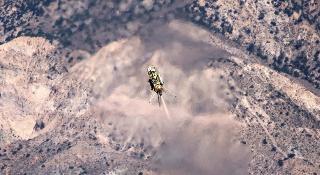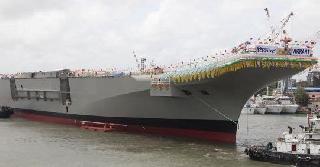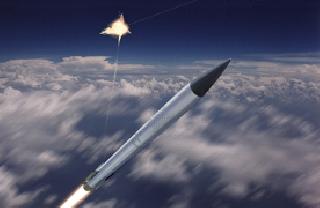
A Xombie technology demonstrator ascends from its pad at Mojave Air and Space Port on a test for NASA's JPL. The vehicle is a vertical-takeoff, vertical-landing experimental rocket. Photo: NASA/Masten
WASHINGTON (BNS): A year after Mars rover Curiosity's landed on Mars, engineers are testing a sophisticated flight-control algorithm that could allow for even more precise, pinpoint landings of future Martian spacecraft.
Engineers at NASA's Jet Propulsion Laboratory in Pasadena and Masten Space Systems in Mojave, California, are conducting flight test of the new Fuel Optimal Large Divert Guidance algorithm - G-FOLD for short - for planetary pinpoint landing using Masten's XA-0.1B "Xombie" vertical-launch, vertical-landing experimental rocket.
NASA's Space Technology Mission Directorate is facilitating the tests via its Game-Changing Development and Flight Opportunities Programmes.
The two space technology programmes work together to test game-changing technologies by taking advantage of Flight Opportunities' commercially provided suborbital platforms and flights.
The new G-FOLD algorithm invented by JPL autonomously generates fuel-optimal landing trajectories in real time and provides a key new technology required for planetary pinpoint landing.
Pinpoint landing capability will allow robotic missions to access currently inaccessible science targets. For crewed missions, it will allow increased precision with minimal fuel requirements to enable landing larger payloads in close proximity to predetermined targets, NASA said.
During a test on 30 July to simulate a course correction during a Martian entry, Masten's Xombie was given a vertical descent profile to an incorrect landing point. About 90 feet into the profile, the G-FOLD flight control software was automatically triggered to calculate a new flight profile in real-time, and the rocket was successfully diverted to the "correct" landing point some 2,460 feet away.
"This flight was an unprecedented free-flying demonstration of the on-board calculation of a fuel-optimal trajectory in real time," said Martin Regehr, acting task lead for the Autonomous Descent Ascent Powered-Flight Testbed at JPL.
JPL and Masten Space Systems are planning to conduct a second flight test with a more complicated divert profile in August, pending data analysis.
 Previous Article
Previous Article Next Article
Next Article













The Indian Air Force, in its flight trials evaluation report submitted before the Defence Ministry l..
view articleAn insight into the Medium Multi-Role Combat Aircraft competition...
view articleSky enthusiasts can now spot the International Space Station (ISS) commanded by Indian-American astr..
view article